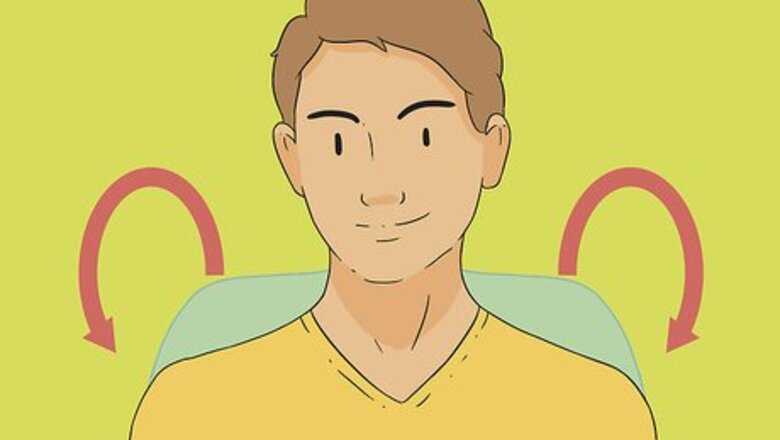
views
Warming Up with Stretches
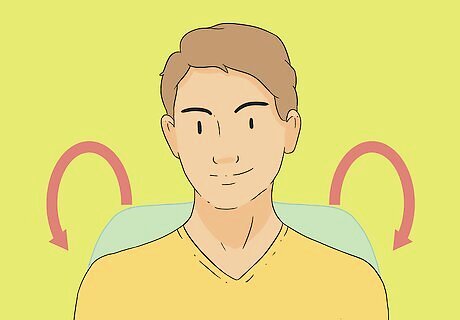
Move your shoulders in circles to loosen them up. Standing with your feet shoulder-width apart, bring your shoulders up towards your ears, then roll them back and down in a circular motion. Do this several times, keeping the motion fluid and loose, then several times in the other direction. You should feel your shoulder muscles relax a little.
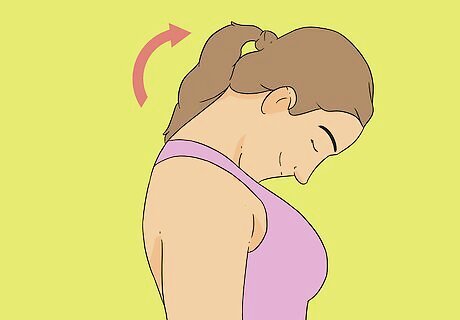
Tuck your chin against your chest to stretch the back of your neck. Keeping your back straight, lean your head forward as far as it will comfortably go, ideally until your chin is pressed against your chest. You can use your hand to press gently on the back of your head to extend this stretch, being careful not to push past where you are comfortable. Stay in this stretch for about 15 seconds.

Tilt your head backwards to stretch the front of your neck. Stand with your back straight and your feet about shoulder-width apart. Keeping your shoulders loose, lean your head slowly backwards until your face is pointed up towards the ceiling. Move your chin as far upward as possible to stretch the front of your neck. Hold this stretch for 15-20 seconds.
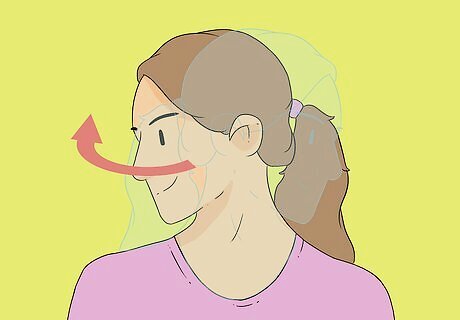
Turn your head to the side as far as possible and hold it there. This will stretch the muscles that rotate your head horizontally. Turn your head as far to the left as possible, gently pushing the side of your face to extend the stretch. Hold it in place for about 15 seconds, then slowly turn it back to face forward. Repeat on the right side.
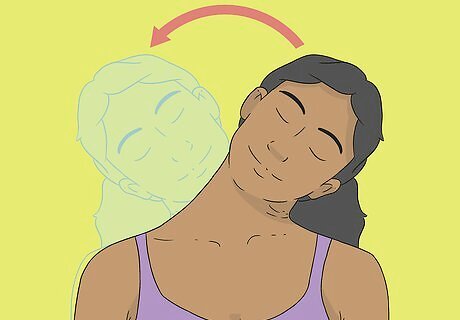
Bring your ear towards your shoulder to stretch the side of your neck. Keeping your shoulders loose and relaxed, tilt your head to the left and bring your ear down towards your shoulder as far as possible. Gently push on the side of your head to extend the stretch, and stay in place for about 15 seconds. Come back up slowly, then repeat the stretch on the right side. To get a deeper stretch, you can also hold a light dumbbell (under 5 pounds (2.3 kg)) in one hand while you stretch your neck in the opposite direction.
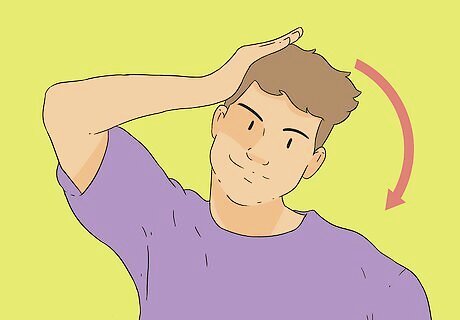
Loosen up the sides of your neck with a chicken wing stretch. Stand up straight and put both hands behind your back. Use your right hand to pull your left hand gently to the right while leaning your head to the right. Hold this stretch for 15-20 seconds, then switch sides.
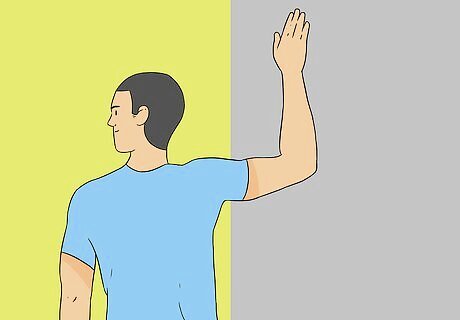
Use a door jamb to do a levator scapulae stretch. The levator scapulae are muscles on the sides of your neck that attach to your shoulders. You can stretch them by lifting your elbow up above your shoulder and resting it on a door jamb. Gently lean into the wall so that the underside of your upper arm is stretched upwards. Tilt your head in the opposite direction of the arm you’re holding up to stretch your levator scapula muscles. Hold this stretch for 15-20 seconds, then switch sides.
Doing Neck Exercises
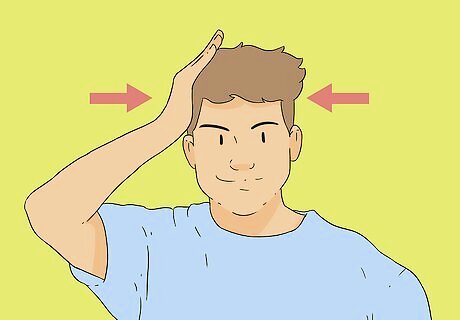
Practice moving your head against resistance in each direction. Position a resistance band or your own hand against your forehead, then use your neck to press your head forward against that resistance. Do this 10 times in a row, take a break, then do one more set of 10. Repeat this process to the left, right, and backwards.
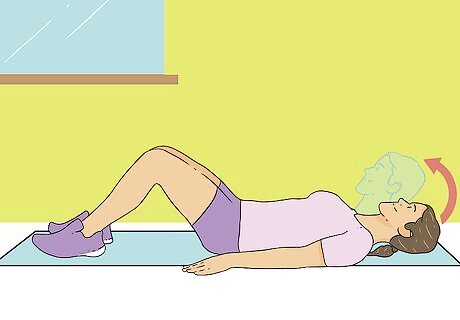
Lie on your back and bring your chin towards your chest. This is like a sit-up, but just for your neck. Lie flat on the ground and lift your head up so that your chin comes as close to your chest as possible. Hold it for 1-2 seconds, then lower your head again. Repeat this 20 times.

Lie on your back and raise your head, then look to the side. Bring your chin towards your chest, then rotate your head as far to the left as possible. Hold it in place for a few seconds, then rotate it as far to the right as possible. Stay there for a few seconds, then lower your head back to the ground. Repeat this 20 times.
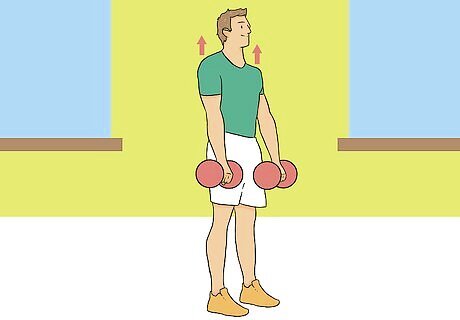
Do dumbbell shrugs with weights. Hold a dumbbell or free weights of equal weight in your hands with your arms hanging down. Lift your shoulders up towards your ears, hold them for a few seconds, then slowly bring them down. Repeat this 20 times, rest, then do another set of 20. Start with small weights, then gradually increase the weight as you feel your strength increasing. Other exercises that can stretch your neck include farmer's carries (where you walk with a weight in each hand), suitcase carries (where you hold the weight in only one hand), and deadlifts.
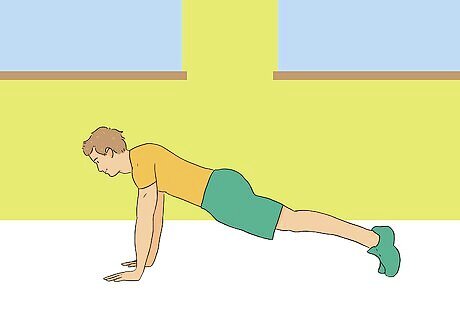
Do a plank bridge once your neck strength has increased. A plank bridge is similar to a front bridge, but instead of keeping a triangular shape with your hips pointed towards the ceiling, your body will be parallel with the ground as if you’re about to do a push-up. Start by holding yourself up with the balls of your feet, your hands, and your head, and eventually put your hands behind your back to increase the weight on your neck. This exercise can cause serious injury to the neck, so it's best to start out slow. You may also want to talk to your doctor first before attempting this exercise.
Avoiding Injury When You Work Out
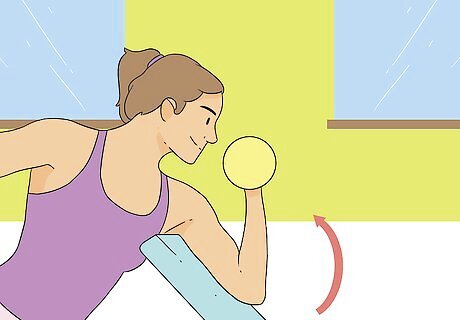
Start off with lighter weights and fewer reps. In the beginning, even if you work out regularly, you will want to keep your weights relatively light and stick to 1 or 2 sets of under 20 reps for each exercise. How much weight you start with will vary depending on your current strength and build, but it should be light enough that you can comfortably lift it without struggle or soreness. As your strength increases, you can gradually add more weight and increase your reps.
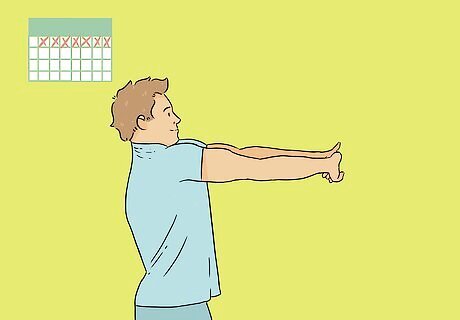
Stretch before and after working out your neck muscles. It’s a good idea to get your muscles loose before you work them out, and it can also be helpful to stretch after exercising to avoid soreness or cramps. Allow yourself time for a full set of stretches before and after each workout.
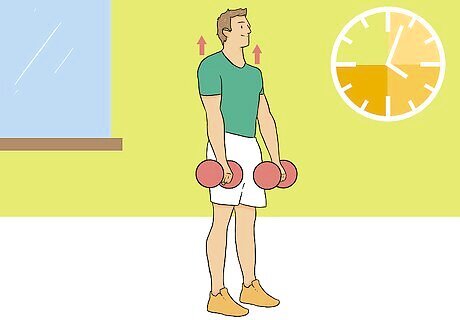
Avoid using momentum when doing reps. While it can be tempting to build up momentum when doing reps because it makes the movement feel easier, it can actually be harmful to your muscles. Neck muscles are very important and often sensitive, so it’s best to be cautious and pause between each rep. For instance, when doing dumbbell shrugs, you should be slowly lowering your shoulders and pausing before you lift them again, instead of “bouncing” your shoulders up and down.
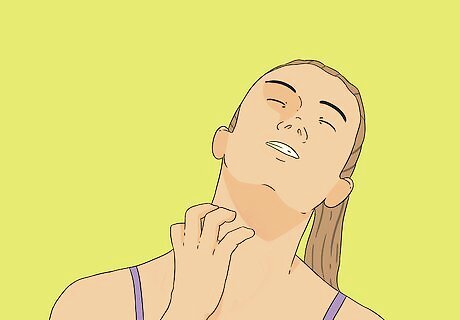
Move slowly and carefully. Even if you work out often, your neck muscles may not be as strong as you think. To avoid pulling a muscle or causing chiropractic issues, make sure you’re moving slowly when you exercise and not doing anything that gives you discomfort beyond a normal muscle “burn.”

Give yourself at least 2 days between workouts. Particularly when you first begin exercising your neck muscles, it’s best to give yourself a couple days between workout sessions to rebuild your muscles. Even if your workout wasn’t especially strenuous, exercising a set of muscles that doesn’t usually get much use can lead to soreness and injury if you overdo it.
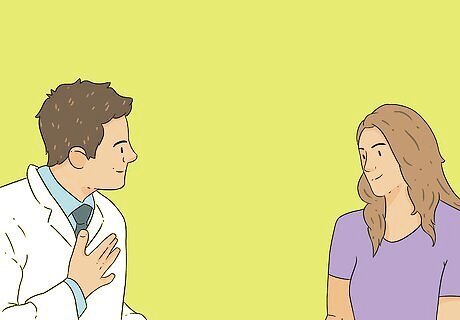
Talk to your doctor if you’re having frequent neck pain or stiffness. While it’s natural to feel slight soreness after a workout, you should consult a doctor if you’re experiencing any intense pain or stiffness that makes it uncomfortable to move normally. Your doctor may instruct you to do certain neck stretches or to use heat or cold on your neck muscles to relieve the pain. They may suggest that you take a break from exercising your neck muscles until the pain has subsided.




















Comments
0 comment